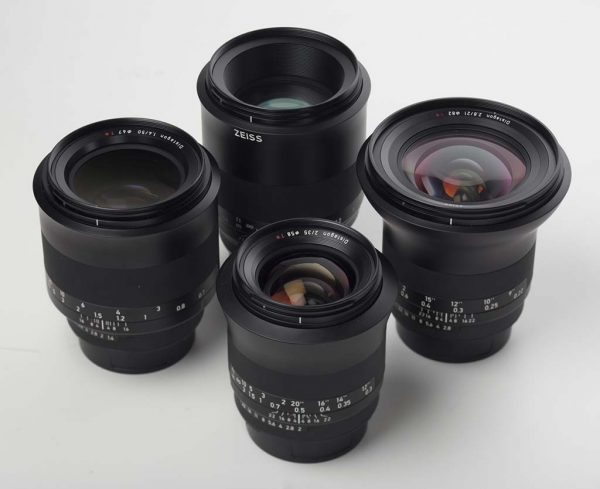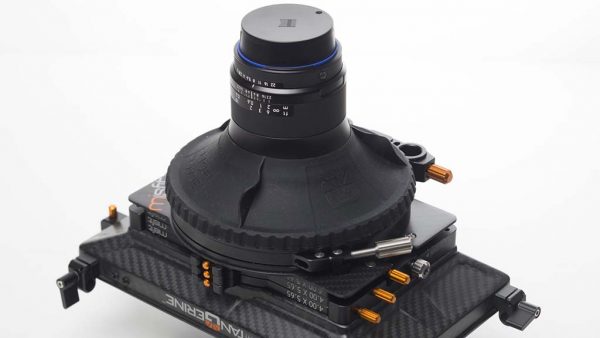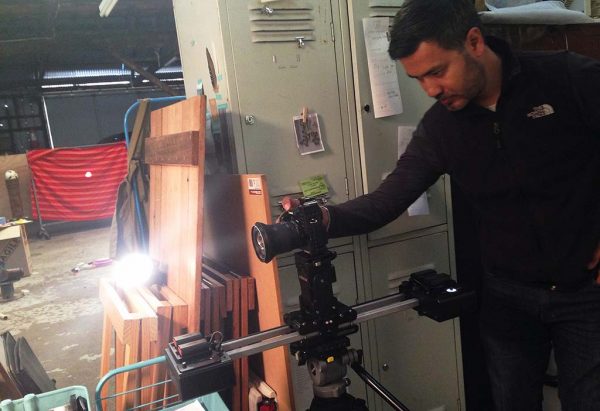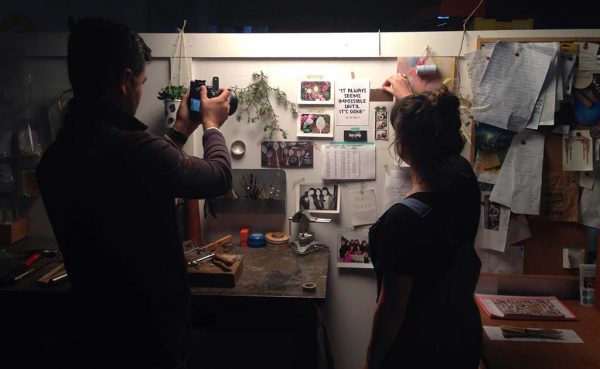Zeiss have been rather active in the last 18 months, releasing consecutive lines of Touit, Otus, Loxia and Batis lenses. The new Milvus lenses were introduced at the IBC show in Amsterdam last month. Built on the success of the revered ZE & ZF line of photographic lenses, the six lenses in this latest range have new housings, improved optics and improved coatings.

They are designed to work with full-frame cameras with larger high resolution sensors. They come in EF and Nikon mounts. Some of the optical designs are also new, specifically in the 50 f1.4 and 85mm f1.4.
The range at launch consists of:
f1.4 / 50mm
f1.4 / 85mm
f2.0 / 50mm Macro
f2.0 / 100mm Macro
f2.8 / 21mm
f2.0 / 35mm
I was somewhat surprised there wasn’t a 35mm f1.4 as yet. Hopefully that lens will come later as it is one of my favourites in the old ZE/ZF line.
The Milvus line takes its name from the Latin term for certain birds of prey. Clearly Zeiss want to modernise the design of their current portfolio of products, given that the ZE and ZF ranges are now close to five years old, and the new Milvus lenses have a more contemporary feel. Gone are the traces of silver metal surfaces; black and blue are the new colour scheme. At first glance these lenses could easily be mistaken for the flagship Otus range; the design is reminiscent of that line, but these are a bit smaller. Clearly the Milvus lenses are not built to the same level of perfection as those in the premier line, but you can still think of them as “baby” Otus lenses. The barrels are gently curved, the focus is silky smooth and they have a very solid feel.
Also new is the option to de-click the iris with the ZF (Nikon) mounted lenses. This works in the same way as it does with the E-mount Loxias. So there’s no longer the hassle of sending your lenses into a third party lens modification service.
I’ve been a long time owner and user of Zeiss stills glass for both photography and video. I was fortunate enough to receive a early Milvus production set consisting of a 21mm f2.8, 35mm f2.0, 50mm f1.4, 100mm Macro f2.0 in Nikon ZF mount. I was a tad disappointed that the 85mm f1.4 wasn’t ready in time for me to try. Due to my relationship with Zeiss I got the lenses for testing a good month ahead of the official announcement. I really wanted to take my time and use them on various different shoots so I could form an rounded opinion. I’ve used them on a fashion shoot, a business promo and also for stills.
The overall look is certainly more clean and modern, but oddly enough, I still haven’t taken to it completely. That said, the tapered lip design works brilliantly with matte box donuts and works like a treat with the Bright Tangerine Blackhole. The lenses vary in size and weight quite a lot. This is something that separates them from dedicated cine lenses like the CP2 and Master Primes. There is no constant maximum aperture across the range. These limitations are to be expected at the price and of course Zeiss still need reasons for people to buy the pricier CP2s.

In use the lenses are far more comfortable in the hand than the ZE and ZFs. The flush focusing ring is covered by a smooth yet comfortable rubber compound which is way better than the previous metal-textured ones on the older lenses. The focus throws vary from lens to lens. The macros are close to 360 degrees, others less; but they are all much longer than standard autofocus lenses. This makes precise manual focussing much easier.
I used these lenses to shoot some stills at the recent Oz Comic-Con trade show and never once did I miss the autofocus. Below is one of the shots I snapped at the event. The sharpness and detail is pretty impressive.

A de-clicked iris option is great to have and it’s good to see the option on the Nikon-mount Milvus. My one gripe is that the design makes it a little hard to get at the iris ring, especially if you have short chubby fingers. Regardless, it is great to have the option, which is essential if you need to change shot exposures when moving from internal to external scenes during a take.
In terms of optical performance, there were a few things I noticed almost immediately when I used the lenses. For one, the chromatic aberrations have been drastically reduced on the 50mm when compared to the ZE/ZF version. The new coating on all the lenses also minimised flaring and improved image contrast quite substantially.
I recently had a discussion with my buddy and fellow ACS member Ben Allan and we concluded that one of the best ways to test a lens is to shoot on a camera that is not necessarily the ‘high-end’. The way that a less-than-perfect camera renders the images is a pretty good test.
Ben summed it up like this: “Looking at the pictures lenses produce when focusing their image onto a more challenging capture format will often heighten the limitations or opportunities of a lens that could otherwise look okay on a more detailed recording.”

With this in mind I was interested to see how a ‘regular’ camera that is commonly used for lower budget productions would fare when paired with the Milvus lenses. I shot the entire “House Of Bec” piece at the start of this post on the Panasonic GH4, shooting with the internal codec at 4:2:0 8-bit, 25 & 96 fps at 1920 x 1080 HD. It was cut in Adobe Premiere, graded with Film Convert and finally rendered to 1280 x 720 for web delivery.
I must say these lenses performed admirably. I prefer small compact lenses and the Milvus glass let me shoot ultra lightweight, up close and personal. All shots were handheld with the exception of the slider moves.

The image quality speaks for itself. The result certainly looks much more cinematic than it would have done using most other stills lenses.
The older ZE/ZF range has served me well for some time now. I’ve even used the lenses alongside CP2 cine lenses on a feature I shot 2 years ago. They have their weaknesses though – especially when it comes to chromatic aberration when wide open. The Milvus are an improvement optically and also in ergonomic form and function. I’m still to be convinced of the aesthetics (call me old school), but I’m loving the way the Milvus line handles and the images so far. Ultimately, that is more important.





